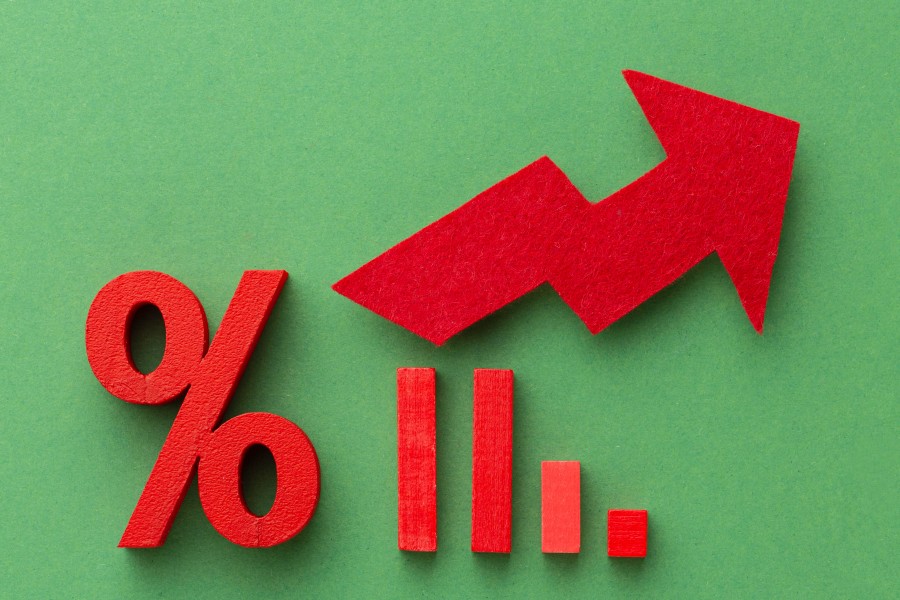There are dozens of terms in the financial world every individual must be aware of. Repo rate and reverse repo rate are two significant terms which, when understood, help you understand the economy of the country. Well, both the Repo rate and reverse repo rate are related to central banks and help you learn about the bank systems. These rates are important for the economy of the country to run efficiently and effectively as they influence interest rates, control inflation, and manage liquidity in the market. In this brief guide, let’s understand the difference between repo rate and reverse repo rate. With this, we would understand how they impact the economy of India.
What Is Repo Rate?
The repo rate is the rate at which commercial banks borrow money from the central bank, which is the Reserve Bank of India or RBI). The Central Bank lends the money to help them meet their short-term needs. If explained in other words, the repo rate is the interest rate the RBI charges for the money taken by central banks.
Banks have to provide securities like government bonds, as collateral to the RBI to get the loan amount. This rate is important because it helps control inflation and maintain liquidity in the market. When the repo rate is high, borrowing becomes expensive for banks, which in turn, makes loans costlier for the public.
What is the Reverse Repo Rate?
The reverse repo rate, also called the reverse repurchase rate, is the opposite of the repo rate. It is the rate at which the RBI borrows money from commercial banks. This process helps the central bank manage liquidity in the banking system. But why does it happen?
Well, when banks have too much money that they cannot lend out to consumers, they keep this money with the Reserve Bank of India. This way they have a risk-free affair in saving their money and also earn interest at the reverse repo rate. By adjusting this reverse repo rate, the RBI can influence how much money banks keep with them versus how much they lend out.
How Does Repo Rate Work?
The repo rate is a powerful tool used by the central bank to control the economy. Here’s a step-by-step look at how it works:
- The RBI decides the repo rate based on various economic indicators like inflation, growth, and liquidity needs.
- When banks need funds, they approach the RBI and offer government securities as collateral.
- Banks agree to buy back these securities at a predetermined price, which includes the interest based on the repo rate.
- If the central bank increases the repo rate, borrowing becomes costlier for banks. They, in turn, increase interest rates on loans to businesses and consumers. This slows down borrowing and spending, thereby, helping to control inflation.
Also Read: What is credit score and its importance?

Major Differences Between Repo Rate and Reverse Repo Rate
Here are the major differences between repo and reverse repo rates:
Purpose
The repo rate is used for liquidity in the banking system. Banks borrow from the central bank to meet short-term needs. While reverse repo rate is used to absorb excess liquidity from the banking system.
Direction of Transaction:
With the repo rate, money flows from the central bank to commercial banks. With the reverse repo rate, money flows from commercial banks to the central bank.
Impact on the Economy
A high repo rate means higher borrowing costs, which can reduce inflation but slow down economic growth. A low repo rate does the opposite. On the other hand, a high reverse repo rate encourages banks to deposit more funds with the central bank, reducing the money supply and controlling inflation. A low reverse repo rate encourages lending.
Collateral
In repo rate, banks provide government securities as collateral to the central bank. While in reverse repo rate, the central bank provides its securities as collateral to banks.
Frequency of Use
Repo Rate is frequently used to manage short-term liquidity and control inflation, while reverse repo rate is used as a tool to absorb excess liquidity and manage the money supply.
Also Read: How can Airtel users apply for Axis Bank Personal Loan?
Conclusion
So, this is how repo rate & reverse repo rate manage the economy. These rates directly impact the interest rates that consumers and businesses face, thereby, influencing everything from personal loans to corporate financing.
For example – If you are considering taking an Airtel personal loan, the repo rate will affect the interest rate you might pay. When the repo rate is low, personal loans, including those from Airtel, become cheaper.
If you are looking forward to applying for a personal loan, download the Airtel Thanks App and get your Airtel personal loan loan amount of up to 9 lakh instantly in your bank account.



